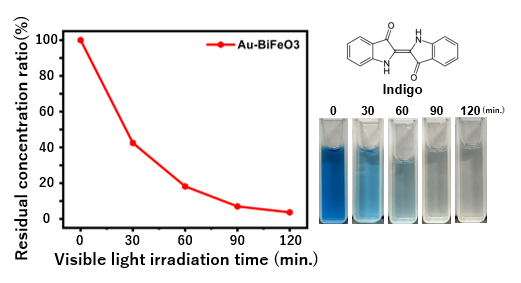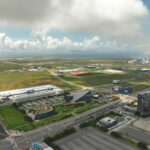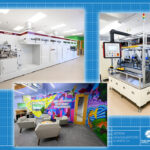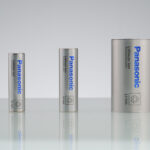ASIA ELECTRONICS INDUSTRYYOUR WINDOW TO SMART MANUFACTURING
Joint Research Yields New Materials for Environmental Devices
In April 2023, Sumitomo Chemical Co., Ltd. and Tokyo Institute of Technology established the Sumitomo Chemical Next-Generation Eco-Friendly Devices Collaborative Research Cluster. Since then, they have been advancing research aimed at promoting the practical implementation of strong correlation materials. Specifically, they are seen as one of the key materials for next-generation quantum devices.
Recently, Sumitomo Chemical and Tokyo Tech have achieved two innovative results related to multiferroic materials*1. Specifically, these are a type of strong correlation materials.
Primarily, the team succeeded in the miniaturization of multiferroic materials, which has been technically challenging. This marks a major step forward toward the implementation of next-generation memories that operate with ultra-low power consumption.
Additionally, they discovered high-efficiency photocatalytic function in multiferroic materials. Eventually, this could lead to achieving a water purification system using sunlight that contributes to reducing environmental impact.
These results aim to make a significant contribution to the development of next-generation environmental technologies. Going forward, as a leading company in this field of technology, Sumitomo Chemical will strive to achieve further results, building on these achievements. Subsequently, it will pursue early practical implementation.
Correlation Materials
Strong correlation materials are a group of materials with strong electron-electron interaction. They are expected to be utilized in next-generation memory devices that can operate with ultra-low power consumption; energy harvesting devices that efficiently convert ambient energy, such as light and heat, into electric energy; and environmentally-friendly water purification systems.
Sumitomo Chemical believes that strong correlation materials are a next-generation essential technology that can contribute to both energy saving and generation. For this reason, since April 2023, the Company has been working on collaborative research projects with the University of Tokyo, Tokyo Institute of Technology, and RIKEN, through cross appointments*2.

Sumitomo Chemical will further step up the industry-academia research and development efforts in the field of strong correlation materials. The Company will also strive to establish technology platforms and implement across society innovative new technologies that can provide solutions to achieve a sustainable society.
Summaries of Research Results
Result 1:
Research teams: Team of Professor Masaki Azuma and a joint team with the Kanagawa Institute of Industrial Science and Technology
Details: In modern society, where information and communication technology is rapidly spreading, energy consumption by memory and computing elements is increasing. Also, low power consumption is a key requirement of memory devices. Multiferroic materials have both strong ferromagnetism and strong ferroelectricity. They see application to magnetic memories that can operate with ultra-low power consumption. However, the miniaturization of multiferroic materials, which are composed of oxides, is extremely difficult.
In this study, the teams succeeded in forming and integrating bismuth ferrite cobaltate, a multiferroic oxide, into nano-sized dots. They used the porous structure of alumina prepared by applying current in an acidic solution. Furthermore, it confirmed that each nanodot had a single polarization information. Thus, it marks a significant step toward the realization of next-generation high-density low-power magnetic memory.

Result 2:
Research Team: Team of Associate Professor Tso-Fu Mark Chang and Dr. Satoshi Okamoto, Chief Research Coordinator of Corporate Planning Office, Sumitomo Chemical (who is also a Specially Appointed Professor at the Sumitomo Chemical Next-Generation Eco-Friendly Devices Collaborative Research Cluster)
Details: As interest in the Sustainable Development Goals has been growing in recent years, there is demand for clean and highly efficient technology to purify the large amounts of organic wastewater generated during the dyeing process of textiles, such as denim. Photocatalytic technology has been attracting attention as a solution for this issue, but there are some challenges for its practical use. With conventional photocatalysts using titanium dioxide, the decomposition reaction of organic substances by visible light (sunlight) does not progress sufficiently, and it is also difficult to recover catalysts efficiently.
In this study, the team found that bismuth ferrite, a multiferroic material, supported with gold nanoparticles functions as a highly efficient visible-light photocatalyst, and succeeded in the high-efficiency decomposition of organic dyes by visible light and catalyst recovery using magnets. This technology aims to achieve a recyclable water purification system that uses solar light as a green energy.

Notes:
*1 A substance that possesses multiple ferroic properties, such as strong ferroelectricity, strong ferromagnetism, and strong ferroelasticity. It shows novel responses different from conventional materials, such as magnetization induced by an electric field (magnetoelectric effect).
*2 An arrangement for industry-academia collaboration under which a researcher or expert is employed by two or more organizations or institutions, including universities, public research institutes, and companies, and engages in research and development and education activities according to his or her role in the organizations or institutions.
References:
Information about the papers:
https://pubs.acs.org/doi/full/10.1021/acsami.4c01232
Journal: ACS Applied Materials and Interfaces
Title: Single or vortex ferroelectric and ferromagnetic domain nanodot array of magnetoelectric BiFe0.9Co0.1O3
Authors: Keita Ozawa, Yasuhito Nagase, Marin Katsumata, Kei Shigematsu, and Masaki Azuma
https://pubs.acs.org/doi/10.1021/acsanm.4c01702
Journal: ACS Applied Nano Materials
Title: Tunable Photocatalytic Properties of Au-Decorated BiFeO3 Nanostructures for Dye Photodegradation
Authors: Jhen-Yang Wu, Chun-Yi Chen, Junan Wang, Xinyu Jin, Wending Hou, Hsuan-Hung Kuo, Wan-Ting Chiu, Tomoyuki Kurioka, Masato Sone, Satoshi Okamoto, Yung-Jung Hsu Tso-Fu, and Mark Chang




